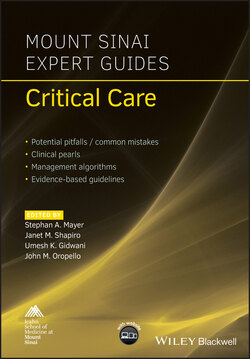Читать книгу Mount Sinai Expert Guides - Группа авторов - Страница 25
Difficult airway
ОглавлениеMost difficult airways can be anticipated, and care should always be taken to recognize them with proper assessment, as unanticipated airway difficulties subject the patient to potential hypoxia, cardiovascular collapse, and neurologic damage.
A distinction should be made as to whether the potential difficulty lies in the ability to mask ventilate, to intubate, or both.
A good rule of thumb is to never intentionally make a patient apneic unless one is certain that ventilation will be possible.
Proper planning and set‐up, availability of equipment, positioning, and adequate preoxygenation become even more important when airway difficulty is suspected.
In the setting of an anticipated difficult airway, additional tools such as video laryngoscopes, fiberoptic bronchoscopes as well as additional providers with the ability to provide surgical airway access should be immediately available prior to induction.
If intubation and mask ventilation are predicted to be difficult, airway topicalization with local anesthetic and fiberoptic intubation while awake with minimal sedation is the gold standard. This should be performed with an open emergency tracheostomy set nearby as well as a provider capable of performing a surgical airway procedure. One may also attempt an ‘awake look’ by titrating small doses of a non‐apnea‐inducing hypnotic‐like ketamine until a brief exam under video or direct laryngoscopy is tolerated. If this view is acceptable, one can then induce as usual and intubate the patient with the particular device.
In the undesirable scenario where intubation is found to be difficult after induction (unanticipated difficult intubation), an attempt should be made to mask ventilate the patient and assistance should be called. If mask ventilation is easy, one can then attempt another method of intubation while confirming proper positioning and bed height. If mask ventilation is difficult, one should attempt the two‐handed mask ventilation technique or placement of an oral airway. If still difficult, supraglottic airway placement such as an LMA should be considered. If ventilation remains poor, emergency invasive airway placement is likely required.
